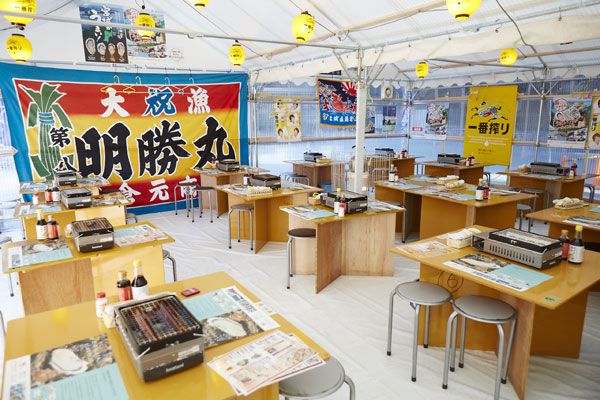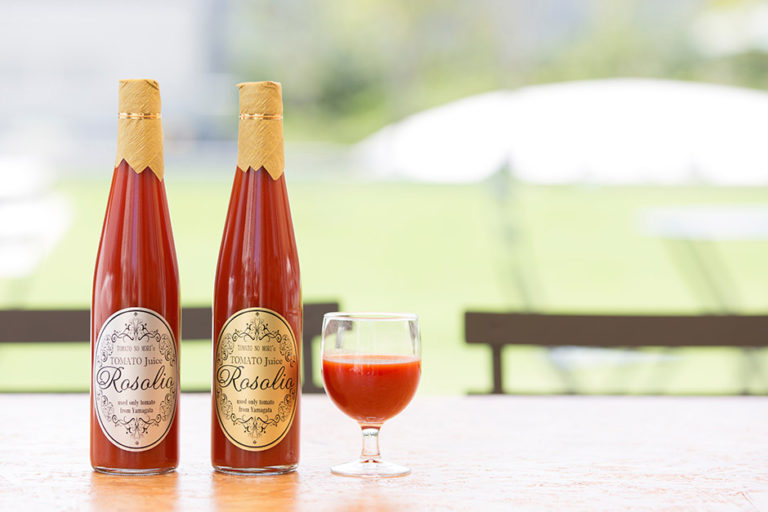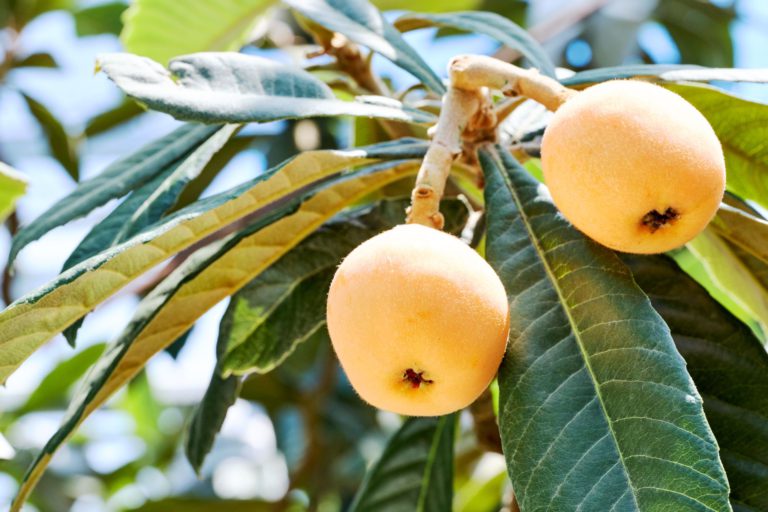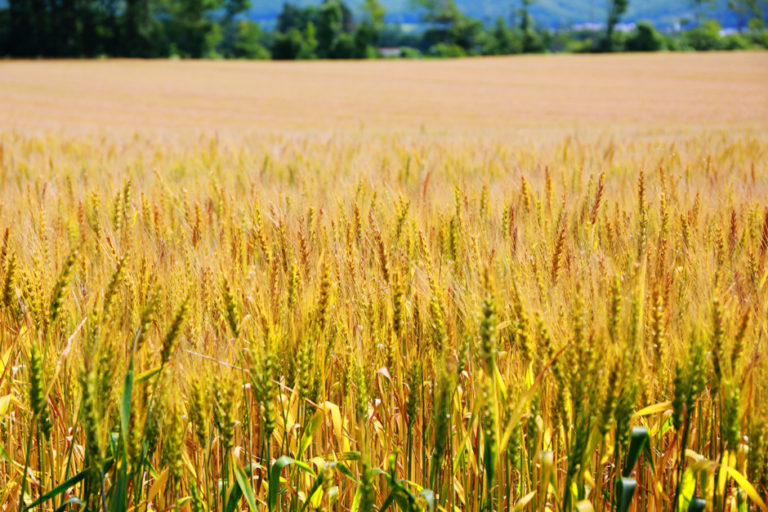You can taste the natural beauty of Karakuwa in its oysters
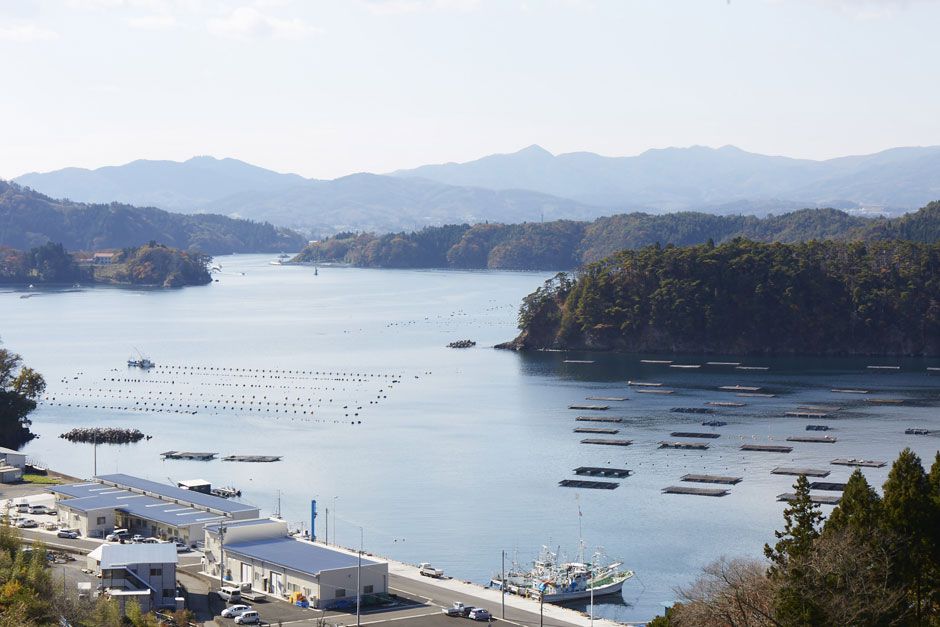
Miyagi prefecture is also a leading supplier of oysters, with oyster farms operating at around 60 different locations. Each has its own distinct characteristics in terms of size, shape and flavor, depending on environmental conditions and farming techniques. By far the largest and most impressive oysters, however, are those harvested in the village of Karakuwa in Kesennuma. These are known as momare-kaki.
Normally it takes 18 months to two years for farmed oysters to reach maturity. But the momare-kaki from Karakuwa are given much longer, generally from two and a half to three years. As a result, the shells grow to nearly twice the size of standard oysters, and are packed with delicious soft flesh with a wonderfully intense flavor. The secret behind the great taste of momare-kaki is the measured approach that involves individual care and attention.
The no-compromise approach to oyster farming
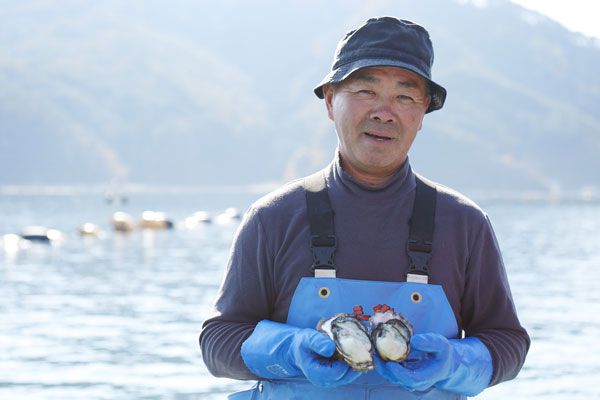
The Karakuwa peninsula is situated right in the center of the ria coastal formation along the Sanriku Sea at the northern tip of Miyagi prefecture, an area famed for its countless picturesque inlets and bays. The peninsula has long been an important base for deep-sea fishing operations, but coastal fishing is also an important part of the local economy today, with four out of five residents working in the industry.
Masanori Hatakeyama is a veteran of oyster farming in Karakuwa, having been in the game for 40 years. He tells us that the name momare-kaki originated from the idea of the oysters being buffeted by the tides (momareru means “to be tossed around” in Japanese). “We grow the momare-kaki very slowly and gently,” says Hatakeyama. “That’s what gives them such exceptional shape and flavor.”
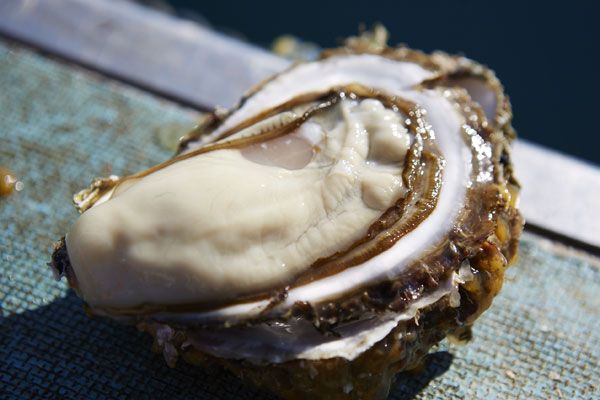
Oyster farming operations in Karakuwa use a combination of calm and secluded inlets (part of the ria coastline) and the rougher open ocean.
Seed oysters are grown in the tranquil environment of the inlets. Those with poor shape are weeded out at the early stage. A tiny hole is drilled in the outer shell and the oysters are threaded together on a long string.
The string is then left in the water for up to six months. By this time, the shells are encrusted with barnacles and seaweed growth. If this is not removed, after another six months it will completely cover the oyster and cut off the supply of nutrients, and may even impact on the shape of the oyster. The growth is removed via a hot water treatment which stops the oyster shell from growing and allows nutrients to reach the flesh inside.
“The Karakuwa peninsula is ringed by mountains that feed phytoplankton into the bay,” explains Hatakeyama. “The oysters that we tend so carefully in the bay benefit from this rich source of nutrients.”
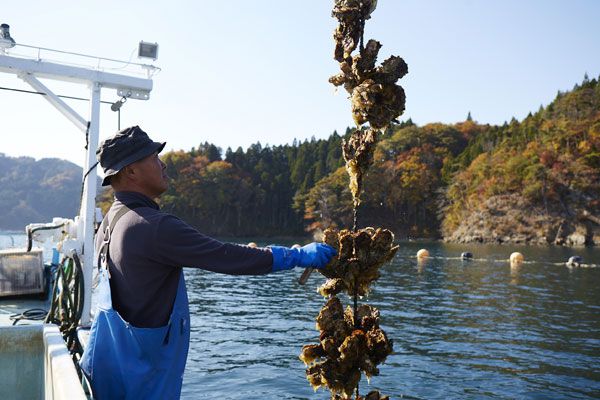
Once the oysters reach the required growth stage, they are transferred to selected sites in the open ocean.
“We move them out to sea very carefully,” notes Hatakeyama. “Once they’re out there, the movement of the waves and the tides helps to concentrate the umami and flavor that develops in the early phase, and also produces a softer, more juicy flesh. The end result is an oyster that is not only generously proportioned, but is also exceptionally delicious.”
Certainly, there is no doubt that the spectacular size and flavor can be attributed to the period spent out in the open ocean being buffeted by the waves and tides. The momare-kaki oyster is something of rare value indeed.
“Winter is our busiest time, when the working day begins in the pitch black of early morning, well before the sun comes up. But the end result of all that hard work is the stunning Karakuwa oyster. They taste fantastic?as a matter of fact,” adds Hatakeyama, beaming proudly, “we think they’re the best oysters around, without a doubt.”
A coordinated effort by the local fishing industry
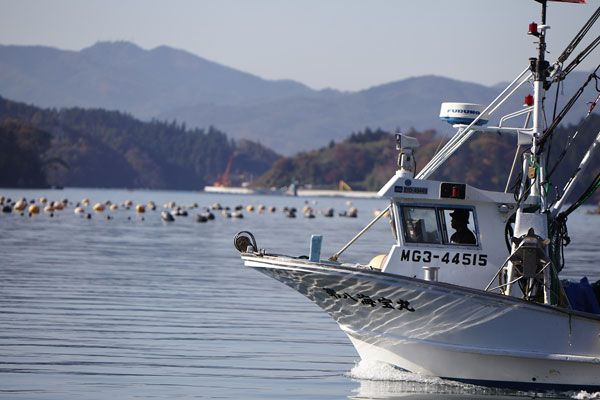
It was not until recently that the unique momare-kaki farming method was embraced by the whole of Karakuwa. Prior to the earthquake and tsunami of March 2011, the local oyster farmers tended to focus on quantity over quality. But the disaster made them realize that this approach was ultimately unsustainable.。
As the local oyster farming industry struggled to recover after the tsunami, the fisherman got together and decided that it would benefit the industry if they were to all start using the same production technique.
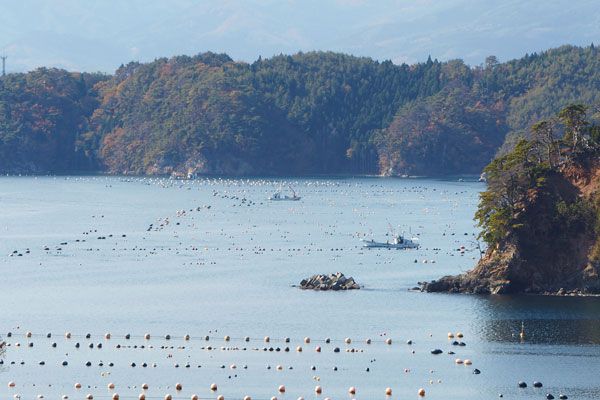
“We were confident that if we put enough thought and hard work into it, we could produce really good quality oysters that would resonate with the public,” explains Hatakeyama. “After the tsunami, we remodeled the oyster farms to give priority to quality over quantity. Because we also knew that we had to make the job more attractive?if oyster farming is all hard work and drudgery, then who’s going to step up and take over? We saw it as our responsibility to be looking ten or 20 years ahead and trying to present oyster farming as a viable career option for the next generation.”
Today, about 20 mainly young fishermen work together to produce momare-kaki oysters and promote the brand as a team effort.
The role of the Miyagi Fisheries Association
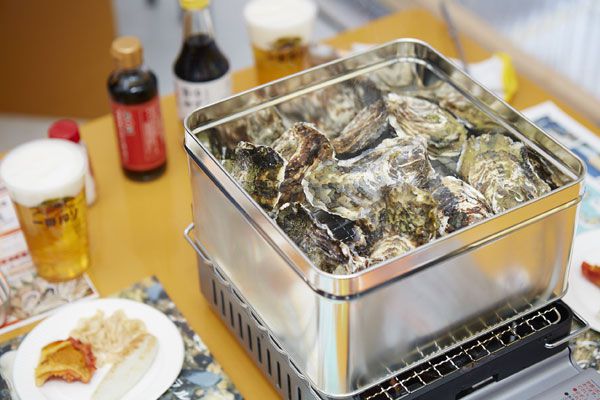
With assistance from the Miyagi Fisheries Association, Karakuwa is steadily building a brand for momare-kaki oysters. The Association is providing similar branding development services to whole oyster producers in other fishing villages such as Nagatsuraura, Mangokuura and Oginohama in Ishinomaki and Naruse in Higashi-Matsushima. The Association develops nationwide promotional campaigns extolling the virtues of Miyagi oysters and also operates a dedicated web-based wholesale marketplace, called Orahono Oyster Market, that sells directly to wholesalers, brokers, distributors and restaurants on behalf of oyster producers throughout the prefecture. The website is used to promote Miyagi oysters directly to buyers and for price negotiations.
The Miyagi Fisheries Association frequently runs promotional events in the big cities. “We like to go along too,” says Hatakeyama, “because it is such a thrill to see customers who appreciate the fruits of our labors. For us, the greatest incentive of all is the knowledge that there are consumers out there who want to buy the product and take it home.”
One such example is the Miyagi Oyster Bar, operating at an event space in Tokyo’s Otemachi district until April 3 2016, which offers city diners a chance to sample whole oysters sourced from different parts of Miyagi prefecture, along with other seafood delicacies such as scallops, octopus and wakame seaweed and non-seafood produce grown in the Tohoku region. So hurry down to Otemachi now, before time runs out to experience the superlative taste of Miyagi oysters, including of course the delicious juicy momare-kaki!
Momare-kaki oysters from Karakuwa
Source:Hiroshi Kikkawa, Deputy Director of the Miyagi Fisheries Association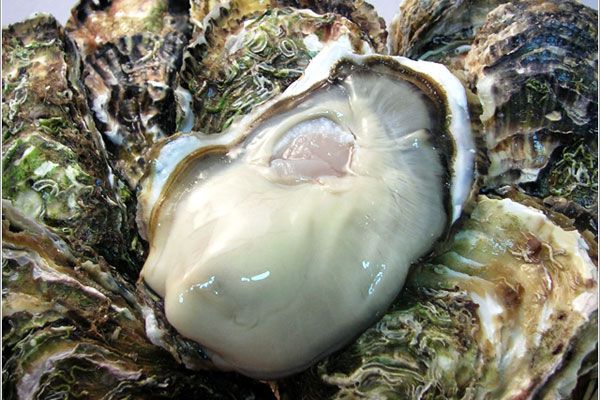
Peak Season
November ~May
Tips
A well-rounded shell with strong color is your guarantee of the best umami.
How to enjoy them
Shabu-shabu hotpot of oysters and fresh wakame seaweed
This is a very special dish that can only be prepared in early March when fresh wakame is available.
Season the oysters and wakame in dashi broth, then dip into ponzu (soy sauce with citrus juice).

